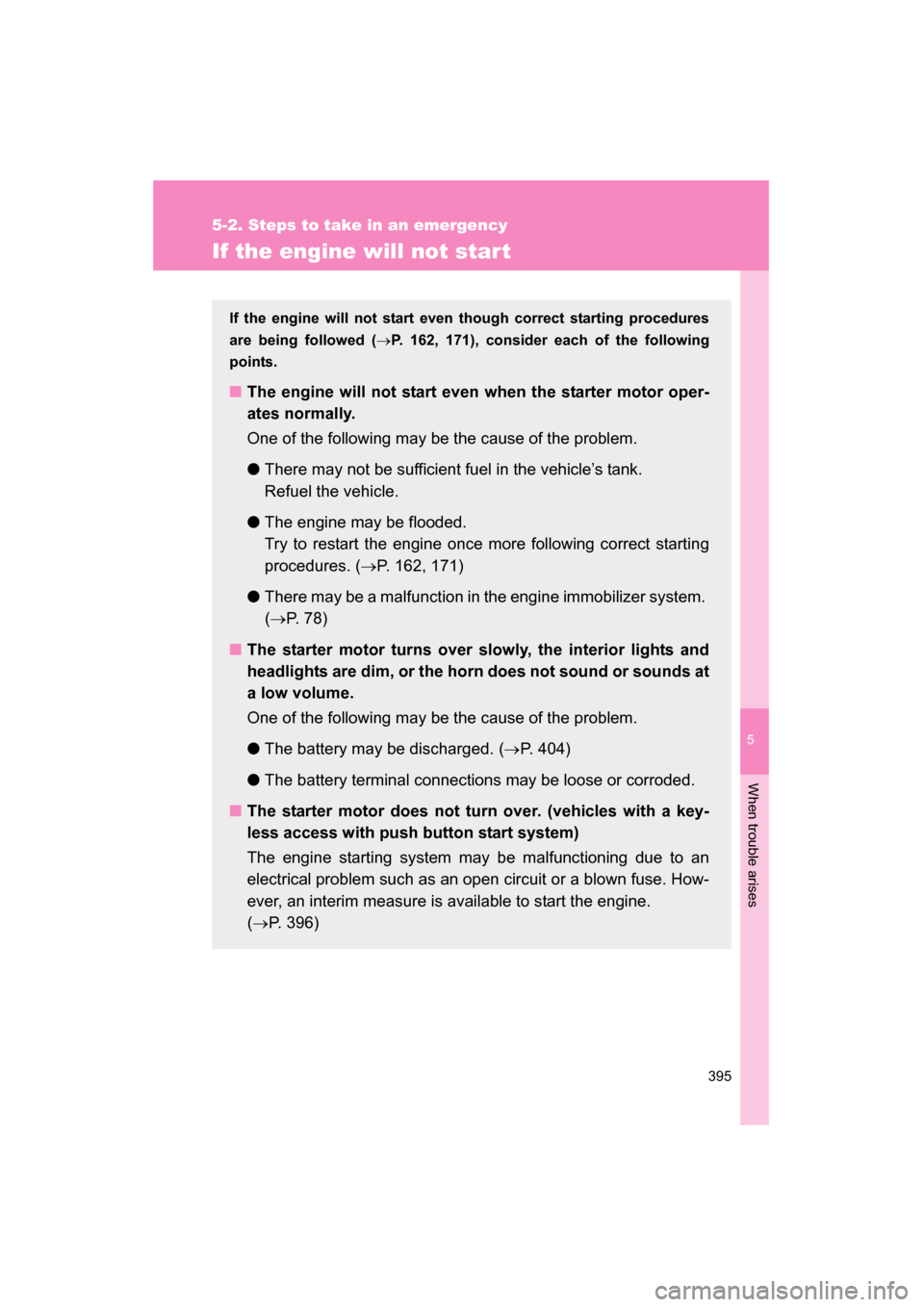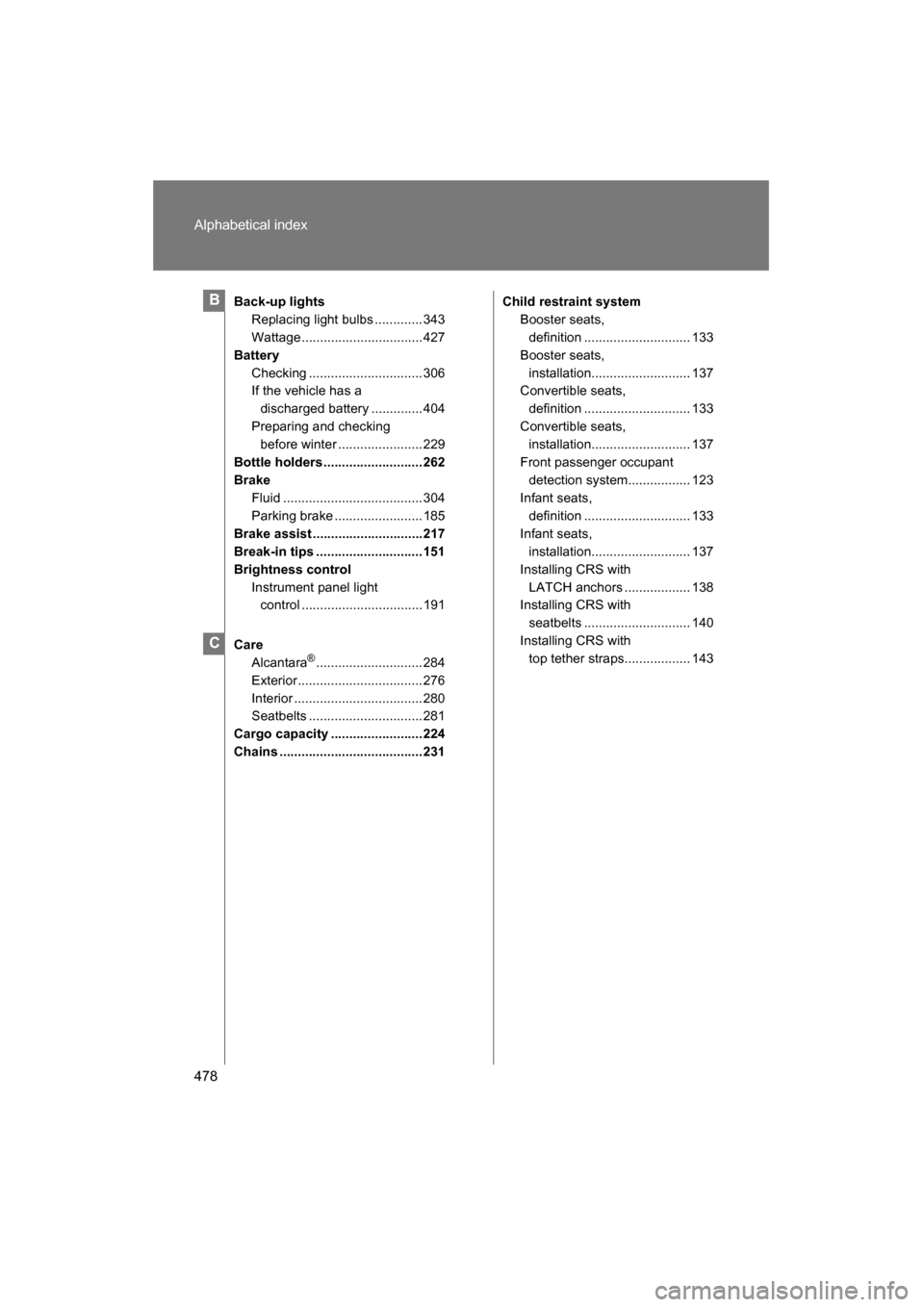Page 357 of 492
357
4-3. Do-it-yourself maintenance
4
Maintenance and care
WARNING
■Discharge headlights
●Contact your SUBARU dealer before replacing the discharge headlights
(including light bulbs).
●Do not touch the discharge headlight’s high voltage socket when the head-
lights are turned on.
An extremely high voltage of 25000 V will be discharged and could result
in serious injury or death by electric shock.
●Do not attempt to take apart or repair the low beam discharge headlight
bulbs, connectors, power supply circuits, or related components.
Doing so could result in electric shock and serious injury or death.
■To prevent damage or fire
Make sure bulbs are fully seated and locked.
Page 360 of 492
360
5-1. Essential information
Hazard war ning flashers
■Hazard warning flashers
If the hazard warning flashers are used for a long time while the engine is
not operating, the battery may discharge.
The hazard warning flashers are used to warn other drivers when the
vehicle has to be stopped in the road due to a breakdown, etc.
Press the switch.All the turn signal lights will
flash. To turn them off, press
the switch once again.
Page 395 of 492

5
When trouble arises
395
5-2. Steps to take in an emergency
If the engine will not start
If the engine will not start even though correct starting procedures
are being followed ( →P. 162, 171), consider each of the following
points.
■The engine will not start even when the starter motor oper-
ates normally.
One of the following may be the cause of the problem. ● There may not be sufficient fuel in the vehicle’s tank.
Refuel the vehicle.
● The engine may be flooded.
Try to restart the engine once more following correct starting
procedures. ( →P. 162, 171)
● There may be a malfunction in the engine immobilizer system. (→ P. 78)
■The starter motor turns over slowly, the interior lights and
headlights are dim, or the horn does not sound or sounds at
a low volume.
One of the following may be the cause of the problem. ● The battery may be discharged. ( →P. 404)
● The battery terminal connections may be loose or corroded.
■The starter motor does not turn over. (vehicles with a key-
less access with push button start system)
The engine starting system may be malfunctioning due to an
electrical problem such as an open circuit or a blown fuse. How-
ever, an interim measure is available to start the engine. (→ P. 396)
Page 396 of 492

396
5-2. Steps to take in an emergency
Emergency start function (vehicles with a keyless access with
push button start system)When the engine does not start, the following steps can be used as
an interim measure to start the engine if the push-button ignition
switch is functioning normally:
Vehicles with an automatic transmission Set the parking brake.
Put the select lever in P.
Set the push-button ignition switch to “ACC” mode.
Press and hold the push-button ignition switch about 15 sec-
onds while depressing the brake pedal firmly.
Even if the engine can be started using the above steps, the system
may be malfunctioning. Have the vehicle checked by your SUBARU
dealer.
■The starter motor does not turn over, the interior lights and
headlights do not turn on, or the horn does not sound.
One of the following may be the cause of the problem. ● One or both of the battery terminals may be disconnected.
● The battery may be discharged. ( →P. 404)
● There may be a malfunction in the steering lock system. (vehi-
cles with a keyless access with push button start system)
Contact your SUBARU dealer if the problem cannot be repaired, or if
repair procedures are unknown.
STEP 1
STEP 2
STEP 3
STEP 4
Page 406 of 492

406
5-2. Steps to take in an emergency
■Starting the engine when the battery is discharged
The engine cannot be started by push-starting.
■Avoiding a discharged battery
●Turn off the headlights and the air conditioning system while the engine is
off.
●Turn off any unnecessary electrical components when the vehicle is run-
ning at a low speed for an extended period, such as in heavy traffic, etc.
■Charging the battery
The electricity stored in the battery will discharge gradually even when the
vehicle is not in use, due to natural discharge and the draining effects of cer-
tain electrical appliances. If the vehicle is left for a long time, the battery may
discharge, and the engine may be unable to start. (The battery recharges
automatically during driving.)
■Precautions when the battery is discharged (vehicles with a keyless
access with push button start system)
●In some cases, it may not be possible to unlock the doors using the key-
less access with push button start system when the battery is dis-
charged. Use the remote keyless entry system or the mechanical key to
lock or unlock the doors.
●The engine may not start on the first attempt after the battery has
recharged but will start normally after the second attempt. This is not a
malfunction.
●The push-button ignition switch mode is memorized by the vehicle. When
the battery is reconnected, the system will return to the mode it was in
before the battery was discharged. Before disconnecting the battery, turn
the push-button ignition switch off.
If you are unsure what mode the push-button ignition switch was in
before the battery discharged, be especially careful when reconnecting
the battery.
Page 427 of 492
427
6-1. Specifications
6
Vehicle specifications
Light bulbs
A: D4S discharge bulbs
B: Wedge base bulbs (amber)
C: Wedge base bulbs (clear)
D: Double end bulbs
Light BulbsBulb No.WTyp e
Exterior Headlights Low/high beam
D4S 35 A
Front side marker lights W3.8W 3.8 C
Front turn signal lights WY21W 21 B
Front fog lights PSX24W 24
License plate lights W5W 5 C
Rear turn signal lights WY21W 21 B
Back-up lights W16W 16 C
Rear side marker lights W5W 5 C
Interior Vanity lights
2D
Trunk light W5W 5 B
Interior light 10 D
Door courtesy lights T10 5 B
Page 447 of 492
447
6-2. Customization
6
Vehicle specifications
Automatic
light control
system (→ P. 202) Light sensor sensitivity ±0% -40% to +40%
Time elapsed before
headlights automati-
cally turn off after doors
are closed
30 seconds0 second
60 seconds
90 seconds
Rear window defogger ( → P. 254) Time elapsed before
the rear window defog-
ger turn off (vehicles
with automatic air con-
ditioning system)
15 minutes Continue
Illumination( → P. 258) Time elapsed before
lights turn off
15 seconds7.5 seconds
30 seconds
Operation when the
doors are unlocked On Off
Operation after the
engine switch is turned
off On Off
Interior light illumination
upon approach (vehi-
cles with a keyless
access with push but-
ton start system) On Off
Interior light illumination On Off
ItemFunctionDefault settingCustomized setting
Page 478 of 492

478
Alphabetical index
Back-up lightsReplacing light bulbs ............. 343
Wattage.................................427
Battery
Checking ............................... 306
If the vehicle has a discharged battery ..............404
Preparing and checking
before winter ....................... 229
Bottle holders ........................... 262
Brake Fluid ...................................... 304
Parking brake ........................ 185
Brake assist ..............................217
Break-in tips ............................. 151
Brightness control Instrument panel light control .................................191
Care Alcantara ®
............................. 284
Exterior.................................. 276
Interior ................................... 280
Seatbelts ............................... 281
Cargo capacity ......................... 224
Chains ....................................... 231 Child restraint system
Booster seats, definition ............................. 133
Booster seats,
installation........................... 137
Convertible seats,
definition ............................. 133
Convertible seats,
installation........................... 137
Front passenger occupant detection system................. 123
Infant seats,
definition ............................. 133
Infant seats,
installation........................... 137
Installing CRS with
LATCH anchors .................. 138
Installing CRS with
seatbelts ............................. 140
Installing CRS with
top tether straps.................. 143B
C